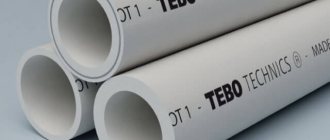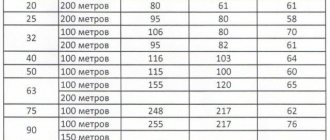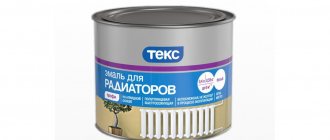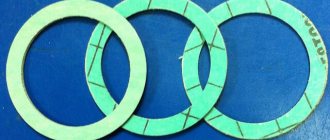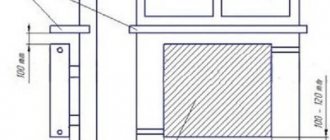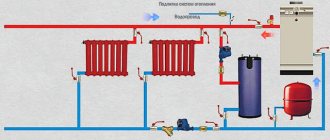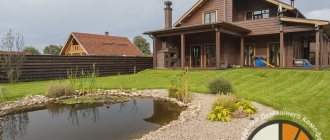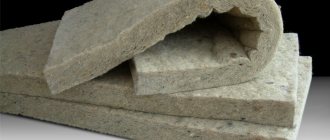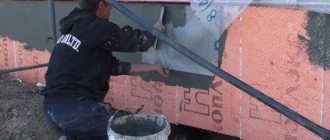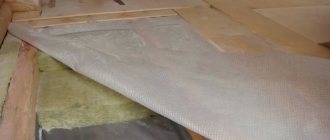Let's dig into the holy of holies and find out which plastic pipes are better: polypropylene, metal-plastic or cross-linked polyethylene. And it doesn’t matter where they will be used - in water supply or heating. And each type has both advantages and obvious disadvantages. Well, let's get started
To choose the right material for a water supply system, you need to determine the conditions in which it will be used. The options may be as follows: 1. For cold and hot water in an apartment, private house 2. for oil, steam and gas heating 3. sewerage 4. basement wiring to a multi-story building 5. heating mains
Technical operating conditions will differ, and these are: temperature, pressure inside the system, mechanical load. Therefore, the plastic will be slightly different.
An opinion was formed that plastic came to us from Europe, saying that the Germans and Italians received patents, established successful production and sold the franchise first to Turkey and then to Russia. But the wise old plumbers remember that cross-linked polyethylene was produced back in the USSR at the Karaganda plastic plant in 1972.
Now water flows over plastic throughout the civilized world and this is considered the most convenient.
There are 3 main types of plastic pipes, the rest are their subspecies. Let's look at which pipes are better and where they should be installed.
Polypropylene pipes, PPR or PPRS
The teams that practice installing these particular hoses are popularly called ironers or ironers. The material is considered consumer goods, that is, widely consumed by the people. A crash test of the PPR pipe showed that it explodes at 40-50 bar. By comparison, metal-plastic breaks already at 40 bars. So the offensive word “consumer goods” shows why people love PPR water supply so much. Cheap and good pipe.
How long will it last?
Under normal conditions, in cold water and a pressure of 2.5 - 4 barr, all materials work the same, with a 50 year guarantee. But polypropylene is also used in heating and underfloor heating, and this temperature is already 45 degrees, and if in radiators, then up to 70-90 degrees. Accordingly, the hotter it is, the shorter the shelf life. In radiators, polypropylene pipes last 15-20 years, and even less at high constant pressure.
Installation features
Unpleasant moments: when connecting, soldering is used and many polypropylene manufacturers produce sagging at the cut site; nozzles and adapters do not always fit perfectly, so additional noise occurs during operation. Although plumbers joke that some people even find the sound of water soothing.
Disadvantages of PPR:
- It is believed that polypropylene is obsolete, and it is not comme il faut for professional construction companies to work with polypropylene.
- Large linear extension. For unreinforced pipes, the coefficient of linear expansion is 0.15 mm/mS, for reinforced pipes - 0.03 mm/mS. This means that when used in a heating system, PPR will stretch and sag 5 times more than metal-plastic. Accordingly, apply a load at a different angle to the connecting parts and begin to leak. This is not covered by the warranty and is considered a violation of technical specifications. The master's secret may be to use short sections or supports under the pipeline, which compensates for linear expansion.
- Lots of joints. And this is almost the main disadvantage of PPR pipes. After all, most of the joints are hidden. And that’s why, when answering the question of which plastic pipe is better, I want to place PPR in the very last place.
Conclusion: excellent for regular plumbing in a city apartment.
Advantages
- The biggest advantage of this material is its low cost. In the Moscow region, the average price for polypropylene pipes is 60 rubles per meter, and corners cost about 20. However, despite this, end switches intended for threaded connection of pipes with metal elements are sold more expensively - 150 rubles per piece, so if in the system has many metal-plastic transitions, repairs can hit your pocket hard.
- Also a plus is the relatively simple installation. To connect a polypropylene pipe with a corner, you just need to insert them into each other and solder them - a procedure that is accessible even to a child.
XLPE pipes
These are thermoplastic hoses, which, when produced in the CIS countries, must comply with the technical specifications of GOST 32415-2013 “Thermoplastic pressure pipes and connecting parts for them for water supply and heating systems.”
It easily holds 95 degrees and high pressure, is chemically resistant, even gas can be passed through it without leakage. They do not conduct electric current - at the dacha you can safely use the remaining piece to insulate the cable. The polyethylene material is perfectly smooth, which prevents salt deposits and dirt from lingering and accumulating.
Linear expansion is average between polypropylene and metal-plastic, but closer to PPR pipes. In terms of performance characteristics, it is the same as metal-plastic, but does not have an aluminum reinforced layer, therefore it is cheaper. Very easy to install.
According to reviews, it’s a very nice, cool pipe: lightweight, bendable, can be heated with a hairdryer and restored if it’s pinched or broken.
How long will they last?
We can say for sure that PPRS is longer. Cross-linked polyethylene reliably holds 90 degrees for more than 50 years. Varieties of PEX pipes have “genetic memory”; after bending, they restore their previous position without additional manipulation.
Installation features
Every customer is concerned that after installation the system does not leak. But pipes don't flow on their own. Only in case of incorrect installation, if the technology is broken, or in case of mechanical breakdown. The quality of the assembly is determined by the intelligence and ingenuity of a technician who loves his work. After all, to do “well, so be it for now,” take the money and disappear from sight is simply fraud.
Real professionals are proud of their creations and ask you to photograph the finished work for your personal portfolio. After all, this is the authority and reputation of the master.
In order to make the correct adjustment of the segments, it is necessary to use special couplings. The declared “genetic memory” will work if the hoses are connected using press technology with crimp fittings. A permanent, reliable connection of the segments is obtained.
Disadvantages of cross-linked polyethylene
The first disadvantage is exposure to ultraviolet radiation. Sun rays, both direct and oblique, destroy cross-linked polyethylene and all its advantages, so it is not used for installation outdoors. The second is the lack of hoses with a diameter of more than 25 mm due to very expensive chemical production.
Conclusion: cross-linked polyethylene pipes are ideal for heating systems in apartments and private houses. Definitely one of the best plastic pipes on the market.
Metal-plastic pipes
Metal-polymer products combine the best of plastic and metal. The inner layer of the hose is cross-linked polyethylene, the middle layer is a reinforcing mesh made of aluminum, the outer layer is polyvinyl chloride, which protects against ultraviolet radiation.
Teams of plumbers, having tried metal-plastic products in installation and operation, remain sincerely attached to them. Over 18 years of active work with this material in Press technology, the masters have never had to blush.
Among the tales of plumbers, there is one that a professional recognizes metal-plastic with his eyes closed by the characteristic ringing sound that a twisted pipe coil has.
The product is heavy, but this is compensated by its stability, which eliminates mechanical damage.
Maintains pressure of 16 bar and temperature of 95 degrees. In housing and communal services, a diameter of 16-40 mm is used.
Antistatic, beautiful, silently allows water to pass through, easy to repair without special equipment
How long will they last?
The shelf life of metal-plastic samples is 50 years. To ensure everything is in order, you need to monitor the installation with reliable press fittings. The weak point of these pipes is leaks at the joints.
Installation features
The pipe perfectly holds up to various manipulations performed on it: reversals, inversions, twists, snakes, vintage. On an object of any complexity, you can figure out how to perform the necessary tricks and fix it. If it is impossible to remove a damaged iron pipe, a metal-plastic pipe can even be inserted inside an old, rusty one with a slightly larger diameter.
Minuses
The disadvantages include: high cost due to complex manufacturing technology and loss of strength due to sharp fluctuations in operating temperature.
Conclusion: well suited for plumbing and heating in city apartments and institutions with a constant temperature in the system. Not suitable for dachas and cottages with temporary residence.
It seems like we figured out which plastic pipe is better. Now about something else
Which brand should you choose?
Having visited the website of the sanitary ware wholesale database, we counted about 100 manufacturers of sanitary ware, of which 29 are Russian and joint ventures. Belgian, Spanish, Italian, Polish, German, and Turkish brands are widely represented. Collecting reviews, the top three most famous among buyers were HENCO, Rehau and VALTEC. But installation teams of construction companies servicing large facilities often use pipes for basement distribution with a diameter of 80 and in heating mains with a diameter of 100.
We advise you to note that what distinguishes a good pipe designer from a bad one is the quality of the couplings.
Flaws
- The main disadvantage is that the pipe has virtually no flexibility. This is especially disadvantageous if, for example, you need to assemble a complex curved line - you will need a large number of corners, which means you will have to do a lot of welding.
- Polypropylene pipes are quite bulky. To provide them with strength and a certain rigidity, it is necessary to make a large diameter, 20-25 mm. But such a pipe, of course, cannot withstand high pressure.
- "Human factor". If the installer does not pay attention during soldering, or a low-quality soldering machine is used, in general, if the person assembling the pipes somehow makes a mistake, the system may leak.
Evaluation criteria for pipe materials
I will list the main points of operating a water pipeline for floor heating. Taken into account:
- Heating temperature. It fluctuates in the range of 30...55 °C.
- Constant pressure in the circuit. It will be 1.5-2 bar; when testing the system, a pressure of 6 bar is used.
- The pipeline is most often located in a screed, where it is subjected to pressure from the pressure of water and concrete.
Thus, the most important parameters of pipes for heated floors:
- Operating temperature 30...55 °C.
- Pressure up to 6 bar.
- Sufficient thermal conductivity.
Protection against oxygen penetration into the channel, thermal expansion indicators, corrosion resistance, and ease of installation are also important.
Advantages
- PEX pipes have a significant advantage over polypropylene pipes - they can bend and keep their shape. This greatly simplifies their installation, especially in geometrically complex systems. But there is also a type of non-plastic PEX that, with any bending, immediately returns to its original form. Such pipes are cheaper, but if you need to make an angle, they have to be fixed with special fasteners. The first ones are marked as FLEX (read as flex), and the second ones Stabil (stable).
- They can withstand quite high temperatures - up to 95 degrees.
- A lower diameter than that of polypropylene pipes - the water flow rate and pressure that the PLP pipe can withstand with a diameter of 25 mm, PEX duplicates with a diameter of only 16.
- Simple installation, without the so-called “human factor”. To connect two sections of the pipeline, you just need to crimp the ring with pliers and twist it until it stops. That is, it is basically impossible to make a mistake here that could lead to a leak.
Copper
Temperature – no restrictions.
Pressure – up to 50 bar (diameter 15 mm, thickness 1 mm); up to 30 bar (diameter 22 mm, thickness 0.6 mm).
It is rightfully considered the best material for installing premium heating systems. Annealed copper is used for heating. When choosing copper as the main material, all components of the system should also be selected from copper or copper alloys, excluding the formation of galvanic couples, which lead to increased corrosion of one of the metals.
Benefits of copper:
- High thermal conductivity;
- Strength with small pipe wall thickness;
- Flexibility, the ability to freely mold the pipe for installation without unnecessary connectors;
- Virtually complete resistance to corrosion;
- Durability comparable to the service life of the building itself;
- Aesthetic appearance, prestige of copper heating systems;
- Possibility of hidden and open installation.
Copper pipes are best suited for boiler rooms.
The disadvantage remains, as always, only the high cost. Metal is expensive, and given that all heating elements must be made from it, the initial investment is huge. However, the positive result is just as impressive.
Copper pipes can be used at any possible coolant temperature. Withstands high pressure and easily withstands water hammer.
Conclusion
A comparative analysis of which pipes are better for water supply, metal-plastic or polypropylene, showed that it is more rational to use a polypropylene pipeline when simultaneously laying hot and cold water supply networks. At the same time, it can last for quite a long time without losing its physical characteristics. The use of metal plastic in this situation is not economically feasible.
MP pipes can be used when laying pipelines transporting only hot water. The main purpose of metal plastic is heating pipes used in underfloor heating circuits and for supplying coolant to radiator heat exchangers.
Requirements for underfloor heating pipes
Theoretically, any pipeline is suitable for transporting coolant that is not too hot. Even assembled from various scraps. But in cases where leaks threaten to seriously waste money, reliability becomes a determining requirement. This is an abstract concept, like durability, that includes a whole range of characteristics. Therefore, the simplest and most obvious recommendation is to use only specially designed pipes.
Temperature resistance
Temperature resistance, necessary even though floor coverings do not heat up above 35°C. For heating, in any case, materials are used that can withstand heating up to 90° and above. This is due not only to peak temperature values, but also to the continuity of exposure. The structure of materials not intended for this purpose crystallizes if they are permanently heated to just 30-40°C and is destroyed.
Mechanical strength
Pipes must have mechanical strength sufficient to contain internal pressure, the weight of the concrete screed, various deformations, and the erosive effects of water. As a rule, the pressure in heating systems of private houses does not exceed 2 atm, but the pipe must withstand at least 6 atm. This figure will include almost any load.
Chemical inertness
Chemical inertness, including resistance to oxygen, electrochemical corrosion, coolant components, as well as aggressive alkaline environment formed by cement.
Sufficient pipe length
The length of a separate section of pipe must be sufficient to lay a separate circuit. This is perhaps the main reason why rolled steel is practically not used here, even from stainless steel. Any joint is a “weak link” in terms of strength and chemical inertness. At the same time, it disrupts the smoothness of the inner surface of the pipeline, reducing its permeability and increasing hydraulic losses.
Therefore, pipe intended for heated floors is most often sold in long sections, rolled into coils.
Options for laying pipe contours
Quality of materials and components
The quality of materials and components, confirmed by certificates, the name of the manufacturer, and consumer reviews. Of course, no one is safe from fakes. But a well-known European brand will definitely be more reliable than a “left noname”. Although you can test the pipe yourself by subjecting it to some extreme loads.
Interchangeability, fittings compliance with accepted standards
An unknown small manufacturer will not be able to saturate the market with them. Buying a pipe on the cheap, even a good one, is only half the battle. Without high-quality fittings, which have nothing to replace, it is completely useless.
Another significant nuance is oxygen diffusion. SNiP 2.04.05-91 directly states that the heating system pipeline must contain an anti-diffusion layer (oxygen barrier) that prevents the penetration of air into the system. We are talking here about polymer pipes - plastic (metal-plastic), polypropylene, polyethylene.
However, opponents of this statement provide their own arguments. For example, that even in a closed system the appearance of oxygen is inevitable. Therefore, the more important task is to eliminate it effectively. A safe, reliable way is to install air vents and (or) deaerators. You can also add hygroscopic additives - toxic hydrazine or sodium sulfite, but their content must be controlled.
Important: thermal conductivity is also a controversial parameter. It becomes key only if rapid heating is required, there are significant heat losses or the heat removal area is insufficient.
Polypropylene
Temperature – up to 95°C.
Pressure – up to 10 bar (95°C) up to 25 bar (20°C).
A direct alternative to metal-plastic pipes. They are supplied in lengths up to 6 meters. They are not as flexible, so any bends or changes in installation direction must be done using fittings.
Polypropylene has increased oxygen diffusion, therefore for closed heating systems it is preferable to use reinforced pipes with aluminum foil.
Temperature limits are the same for all polymer materials – 95°C. Claims about 110°C are more often a publicity stunt than a real benefit.
Due to its greater thickness, polypropylene has greater strength. The fittings are attached to the pipe by welding, which gives the prefabricated structure and joints the same high strength as the pipe itself. Naturally, subject to the rules for soldering polypropylene.
It is a mistake to believe that soldering polypropylene is the easiest and most affordable method. Yes, a soldering iron for pipes can be purchased at fairly low prices, but the soldering process is quite complex and demanding for the performer. The presence of a simple oil film of contamination on the surface of the tube already reduces the strength of the connection by more than a third, and it is simply impossible to control the quality of the finished solder.
Soldering polypropylene is the biggest drawback of these pipes
Such pipes can be hidden in a screed and in a layer of plaster, but the joints cannot be hidden, which limits the possibility of hidden installation.
